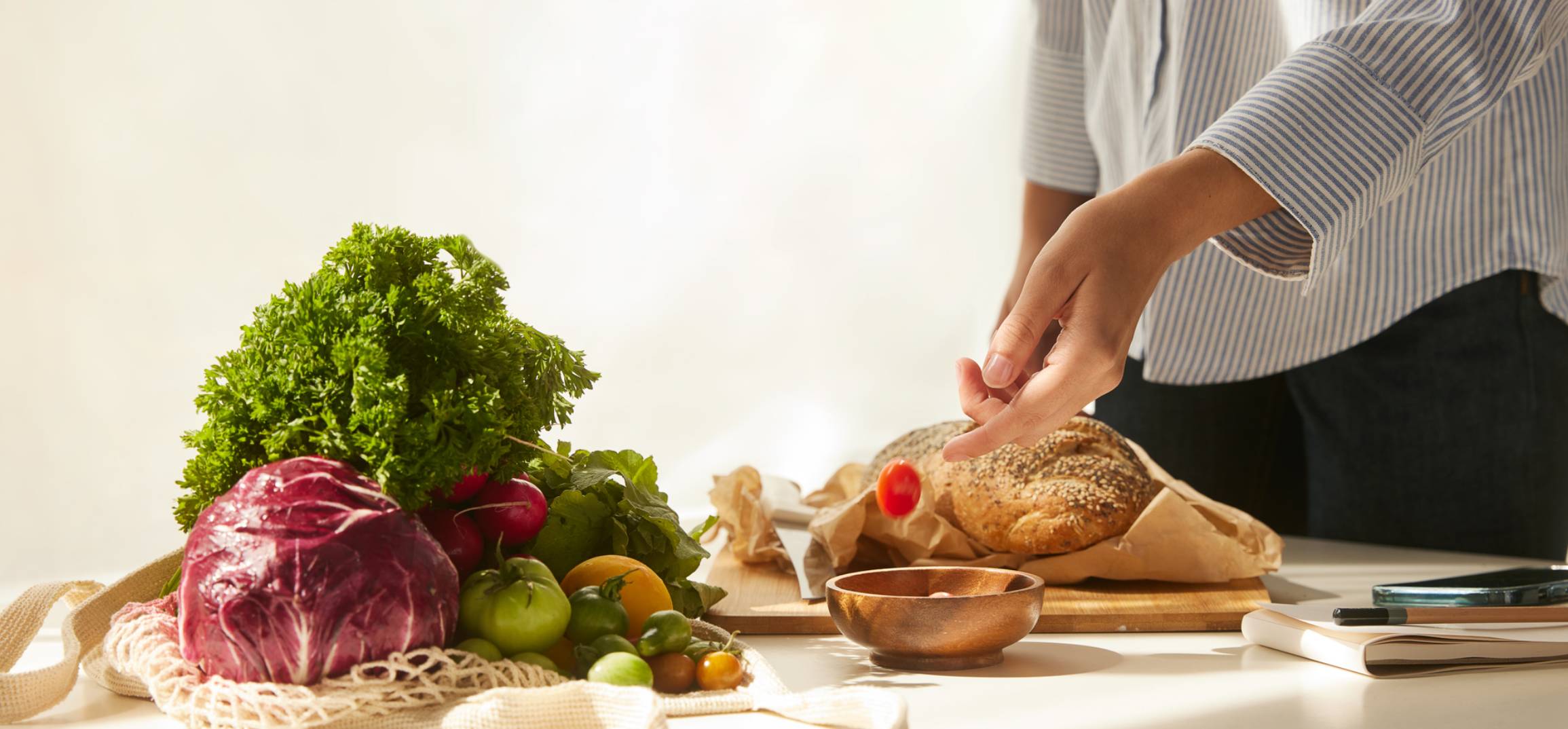La Cucina Povera: Lessons from Tuscany on Eating Better While Spending Less

By Bonny ReichertOctober 5, 2022
One chef and author shares ways to make simple, no-waste meals that are easy on your wallet and big on taste.
There is a certain fanciness that used to come to mind when I heard “Tuscany.” My imagination conjured up rolling landscape, towering cypress trees, vast wine estates neatly dotted with hundreds of grape vines. All that changed with an opportunity to spend a few quiet weeks working out of a tiny apartment in a medieval Tuscan village.
It was a place with a closet for a kitchen, hot water only when the sun shone on the rooftop tank and air conditioning only when I threw open the cracked old windows. Perched at the top of a hill, the village offered incredible vistas but not a single shop or market; the nearest grocery store was an hour’s walk away. Think like a traditional Tuscan, someone in the village told me when I wondered, aloud, if I might starve.
Right. I had already tried a few dishes from Tuscany, but I’d never considered the necessity that mothered their invention — a resourcefulness and frugality characteristic of the traditional kitchens of rural Italy, where money can be tight and distances between villages and towns very big. Stretching every tomato, every slice of bread, every clove of garlic just makes sense. This creative style of cooking even has its own name: la cucina povera, which literally means “the poor kitchen,” but more loosely refers to a cuisine based on limited supply and a deep resistance to waste.
Not that the food suffers in the bargain. Some of the most beloved Italian dishes derive from la cucina povera and you’re as likely to find them in the upscale restaurants and hotels of Italy as you are in a humble Tuscan kitchen. What’s more, the virtues of smart shopping, wasting nothing and cooking what you have on hand make sense in any language, and there is much to be learned from the way Italian cooks plan their meals and feed their families. Here are a few of the best (and easiest) techniques
Appetizers and Salads
Bruschetta: Rural Italians are loathe to waste even a slice of bread. Cut the end of a stale loaf into slices and toast in a medium oven. Once lightly browned, rub with the cut side of a clove of garlic and pile with whatever you have on hand: coarsely chopped tomatoes, sliced olives, a torn piece of bocconcini, even a few sautéed mushrooms. Drizzle with oil and sprinkle with salt.
Panzanella: Another great use for stale bread, this time in a salad. Cube any leftover bread, drizzle with a little olive oil and toast in the oven. Combine in a bowl with coarsely chopped tomatoes, sliced red onions, celery, arugula, or whatever you have. Dress with olive oil, wine vinegar, salt and pepper.
Soups and Beans
Acquacotta: Literally cooked water, this ancient peasant soup was conceived to turn leftovers into a hearty meal. Slowly simmer tomatoes, celery, onions, wild herbs or whatever is lurking in the bottom of the vegetable drawer. Near the end of the cooking time, poach an egg or two in the broth and season with salt and pepper before serving.
Pasta e fagioli: Another traditional inexpensive dish, popular in regions beyond Tuscany, both to the north and south. Heat olive oil in a heavy pot; stir in finely chopped onion, carrot, celery and maybe a little pancetta or bacon. Add 1 clove of chopped garlic and soon after, about 4 cups each of chicken broth and water. Add 2 cups cannellini beans. (If cooking from dried beans, which are the cheapest and the tastiest, soak them in water overnight ahead of time. Canned beans will work, too; just rinse them to remove their salty liquid.) When beans are close to fork-tender, add 1 cup tubetti or other small, dried pasta. Simmer and stir until pasta is al dente. Season with salt and pepper, and serve.
Main
Ribollita: Literally “reboiled,” this hearty Tuscan favourite features day-old bread and leftover scraps of vegetables. Follow the steps for pasta e fagioli (leaving out the meat if you prefer a vegetarian dish) but instead of pasta, add 1 can whole peeled tomatoes and 1 bunch chopped Tuscan kale. Keep at a lively simmer until tomatoes start to break down and kale is tender. Preheat oven to 500°F. Lay stale bread slices overtop stew and push down so it becomes soft. Drizzle with a little oil and scatter with grated Parmigiano. Bake until top of bread is crisp and cheese is lightly browned; about 10 minutes. Serve hot.
Things our lawyers want you to know
This article is intended as general information only and is not to be relied upon as constituting legal, financial or other professional advice. A professional advisor should be consulted regarding your specific situation. Information presented is believed to be factual and up-to-date but we do not guarantee its accuracy and it should not be regarded as a complete analysis of the subjects discussed. All expressions of opinion reflect the judgment of the authors as of the date of publication and are subject to change. No endorsement of any third parties or their advice, opinions, information, products or services is expressly given or implied by Royal Bank of Canada or any of its affiliates.




